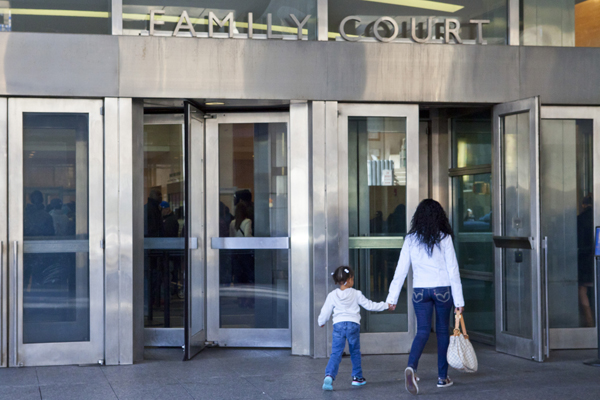
Photo by: Marc Fader
April was child abuse awareness month, dedicated to increasing public awareness of the need to ensure the safety and welfare of children. As a result, child abuse and neglect awareness activities were promoted across the country. Many people wear blue ribbons each April in memory of those who have died as a result of child abuse and in support of efforts to prevent abuse. Horrific fatality cases are often recounted in the media.
However, there is a group of children who are also pervasively impacted yet remain unseen. The abuse and neglect they suffer is far more insidious and widespread than most people are aware, yet little to no attention is given to these children, who are the subjects in high-conflict custody and visitation cases.
At the Children’s Law Center (CLCNY) we provide representation to over 9,000 children per year in custody/visitation, guardianship, domestic violence and related child protective cases in New York City Family Courts and Integrated Domestic Violence Parts in Supreme Courts. Our mission is to give a child a strong and effective voice in a legal proceeding that has a critical impact on his or her life. We are one of the few non-profit organizations that specializes in high-conflict custody and visitation cases.
The cases have a direct and substantial impact upon the lives of children, including: where and with whom they will live; whether or not they will be able to visit a parent, grandparent, or sibling; and who will be their legal guardian. In more than half the cases, there are allegations of domestic violence between the parties, often involving the children.
In an interview with eight-year-old Ethan (his name has been changed to protect his identify), he described his parents as a “whole bunch of wild animals going on top of me,” and that he felt knocked down, as if by a battering ram.
In high-conflict custody and visitation cases, adults frequently become consumed by the litigation and misguided motivations to hurt the other parent, and they either ignore or are incapable of recognizing how their child is feeling and how they are negatively impacted by the constant legal battles, hostile family environment and acts of verbal and physical aggression.
Ethan, in response to his parents’ battle in which he felt “it is like a tug of war game—I am the rope and each family is tugging,” regularly banged his head against a table or a wall in frustration, and thought of hitting himself with a hammer. It is no surprise that children of high-conflict parents are three times more likely to develop psychological distress than children of low-conflict parents, and are also more likely to suffer from behavioral problems as they are growing up.
Parents in high-conflict custody and visitation cases are so locked into their belief systems that they will disagree with any contrary conclusions of an assessor or therapist and are immune to therapy, education or persuasion. They view their own actions as being in the child’s best interest and will never acknowledge or accept responsibility for their actions or change. They appear self-absorbed and blind to the effects on the child, on the other parent, as well as extended family.
Custody and visitation cases can take years and children are often raised in family court, even after a determination is made on the original case. Often supplemental petition after petition is filed, until the child reaches the age of majority.
In high-conflict cases early identification of the issues and appropriate matching of services before the family reaches the courtroom is critical. It is indisputable that it is preferable for separated and divorcing parents to make plans for their children and resolve their disputes without court intervention.
In fact, jurisdictions outside of New York offer education, counseling, mediation and evaluation before cases are scheduled before a judge. It is clear that in an era of increasing demand and diminishing resources in the family court system, alternatives must be explored and effectively implemented to meet the needs of the large number of children who are subjects in custody and visitation cases.
Until such a vision can be realized in New York it is critical for the child advocate and the court to identify high-conflict cases early on and accelerate the process for a forensic evaluation and trial. Legal and therapeutic interventions should be geared toward fostering full reconciliation in the shortest possible time and to keep moving forward, not backwards, in parental contact, rather than take a wait and see approach.
In fact, a case recently closed at CLCNY which had been pending since 2004. Justice delayed is truly justice denied for the child whose life is in limbo for such a long period of time.
It’s also key for the court to possess as much information as possible–and for court orders to be thorough, clear and unambiguous and set out clear expectations. All issues related to custody and visitation should be addressed in order to limit or prevent future litigation which could prove harmful to the child.
Ultimately, children such as Ethan, who account for the largest number in family court, even greater than in child abuse and neglect proceedings, demand greater attention. As child abuse and awareness campaigns and activities for the month of April fade into memory, consider the casualties of the custody war.








